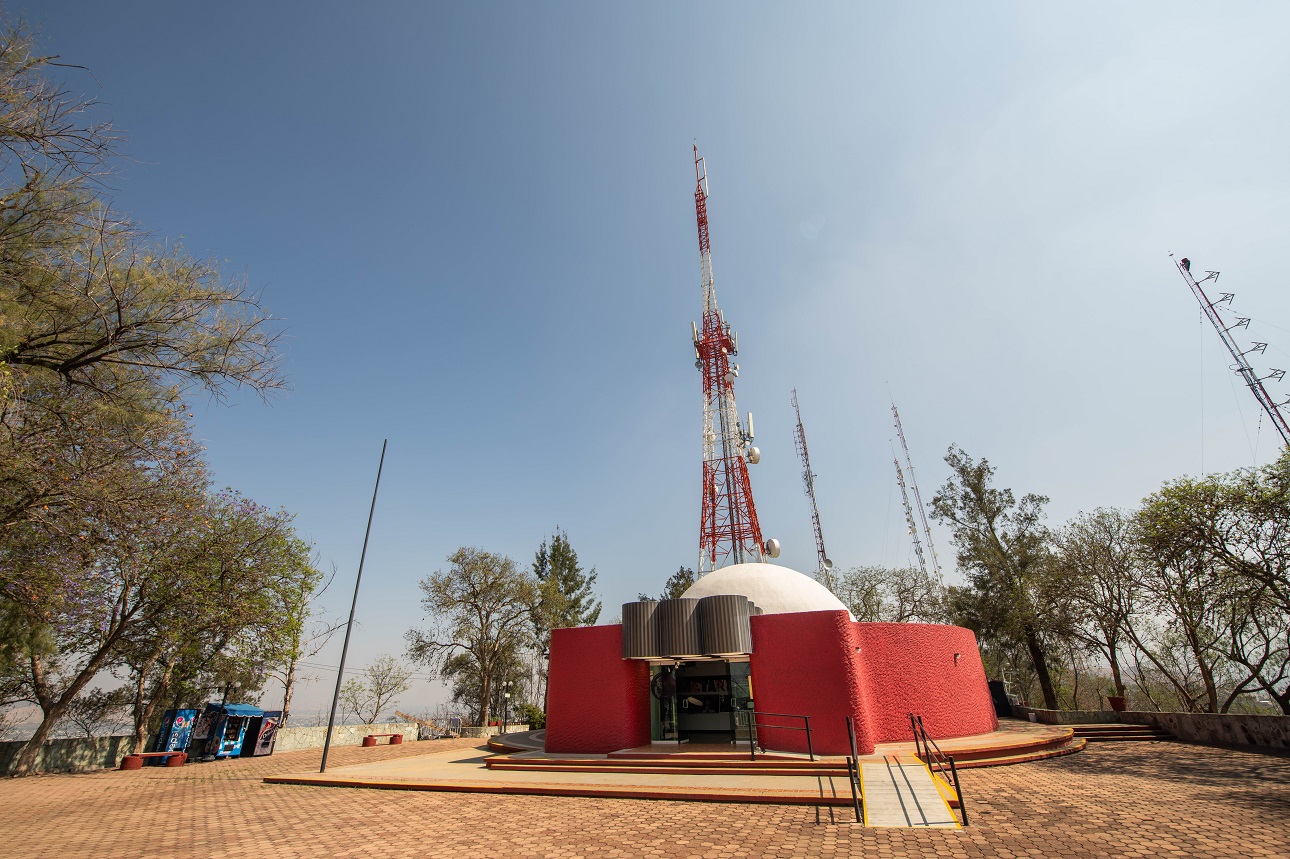Planetario Nandehui, Oaxaca.
The Nundehui Planetarium is one of the most important science outreach centers in the city of Oaxaca de Juárez. Its name comes from Zapotec and means “Sky Observatory.” It is located on Cerro del Fortín, an iconic site in the Oaxacan capital that also hosts other cultural spaces.

Located in the vicinity of the iconic Cerro del Fortín, right at its highest point and to the north of the Guelaguetza Auditorium, stands the Nandehui Planetarium. This symbolic place has been cherished by generations of Oaxacan children, who have discovered the wonders of the universe and developed a love and curiosity for astronomy.
This magical planetarium features an exhibition hall where a projection of the celestial dome is displayed, showing constellations, photographs of various galaxies, the lunar surface, glyphic diagrams of Zapotec and Mixtec calendars, sun craters, and other cosmic phenomena. These projections last approximately 45 minutes, and the room has a capacity for 110 people, making it ideal for families and groups of friends.
Additionally, the planetarium offers visitors an exhibition of space rockets, shuttles, and other space mission-related items, all made to scale using recycled materials. On special occasions, workshops are held on the planetarium’s esplanade, such as “Adventures with Reading,” making eclipse-viewing boxes, and the “Tamayo Móvil,” where children enjoy painting, drawing, ceramics, engraving, and many other activities—all aimed at fostering interest in science and technology.
The planetarium was built in 1973 but officially opened its doors on July 17, 1976, with the mission of offering the people of Oaxaca an educational and innovative space where science and technology take center stage. After its inauguration, the city of Palo Alto, California, donated an analog projector, manufactured in 1950 using Japanese technology. Remarkably, this projector is still in operation today.
The planetarium was named Nundehui, a Mixtec word meaning “looking at the sky” or “facing the sky,” as it refers to Mixtec astronomers who observed the movements of the sun, moon, certain planets, and stars. Architecturally, the planetarium stands out with its 360-degree dome, housing its heart: a mechanical planetarium projector that recreates the mysteries of the cosmos.
Over the years, the planetarium has undergone various improvements to provide greater comfort and efficiency for its visitors, while preserving its historical essence for future generations to enjoy.